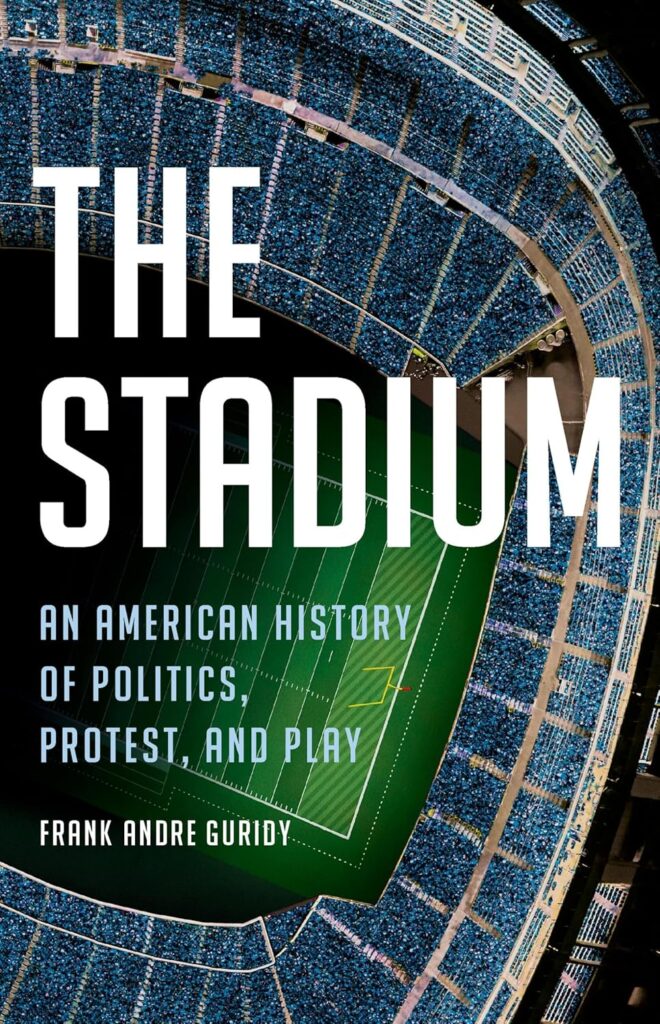
The Stadium: An American History of Politics, Protest, and Play
By Frank Andre Guridy
(Basic Books 2024)
If you live around an American metropolitan area, then you’ve almost certainly been privy to conversations about a new stadium or arena. The giant buildings have become a mainstay of city planning and local political discussions, and seemingly a necessary part of staking claims to televised sporting events and, hopefully, a stop on Taylor Swift’s next tour. Even if you live nowhere close, you’re probably at least mildly aware of the new $5 billion SoFi stadium in Los Angeles or the iconic Fenway Park in Boston. These big buildings make up the subject of a new study by historian Frank Andre Guridy, who holds an endowed chair at Columbia University. Of course, the concept of the mega structure goes back, way back at least to the Roman Colosseum circa A.D. 70. But jump forward nearly two millennia, and Guridy suggests that the stadium has become an integral part of the social history — and current moment — of this country. He talked to Common Good editors in June.
What are we talking about when we talk about a stadium?
I have a fairly expensive notion of a stadium. To me, it’s any structure built to gather a significant chunk of people to see some sort of event. That could be the local high school stadium, that could be Mercedes-Benz Stadium. I’m trying to argue that stadiums are institutions that have all sorts of events, extraordinary and ordinary events, everything from concerts to athletic contests to rallies.
You make the case that the stadium remade American life. What does that mean?
I focus on the post-World War II period, because I think that’s the period when you start to see the emergence of the sports industry dovetailing with the prosperity of post-war America — dovetailing with the freedom movements, whether it’s the Black Freedom Movement or other marginalized populations. You don’t have that after the Civil War, but much of the second reconstruction is happening in ballparks and sports facilities and all sorts of stadiums and arenas across the country.
To what extent is the importance of the stadium its capacity, and to what extent does it have to do with sports?
Because of their size and their semi-public character, stadiums loom large in urban settings, and even in small towns. They’re built in such a way to house a spectacular — the way they’re designed, the way their architecture works, the way the seating is planned around a stage of some type of field or court. Their prominence is probably based on the architecture. The sports part of it is because the sports industry has become so economically and politically powerful in ways that it was not for much of the 20th century.
There aren’t many spaces in American life where people find themselves with both Democrats and Republicans, Black and white people, folks from different socioeconomic classes. Yet you do get that dynamic at a sports game. Is there something to the stadium as an agent of unity?
I don’t argue this in the book, but I think one could: Stadiums operate like temples and churches. They’re based on the carrying out of rituals that most people know. Everything from tailgating to how people dress, the weekly aspect of it. With season ticket holders, there’s a sort of congregating regularity that people experience. Those things organically produce commonality. Why do so many people remember their first experiences going to the ballpark? It’s this hugely impactful experience that people connect to family, to community. That could be the next game. That could be a civil rights rally in 1965. Or that could be a concert.
Some of the largest crowds in American history went to see Billy Graham, the evangelist. You’re talking about tens of thousand people seeing an evangelist. That shows you the power of these buildings.





